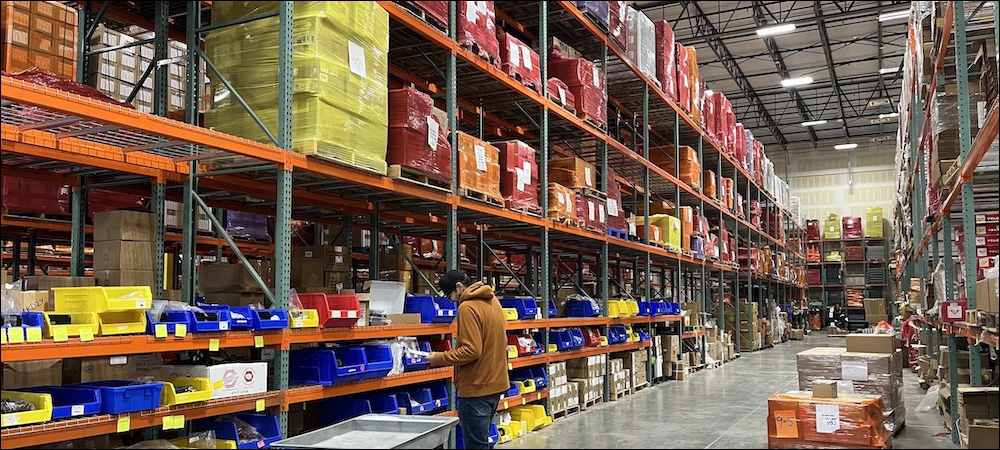- STMicroelectronics Intros M2M Embedded SIMs, Inertial Sensors
- Renesas Acquires Reality Analytics, Offers IoT Development Platforms
- A2B Tracking RFID Platform Receives Zebra Validation
- Technology Provider Velociti Doubles Warehouse Size
- Indoor Robotics Raises Series A Funding for Drone Tech
Presented here are recent news announcements in the radio frequency identification and Internet of Things industries.
STMicroelectronics Intros M2M Embedded SIMs, Inertial Sensors
STMicroelectronics has announced that its ST4SIM-201 embedded SIM for machine-to-machine communication meets the latest standards for 5G network access, M2M security and flexible remote provisioning and management. Compliant with ETSI/3GPP release 16, the ST4SIM-201 can connect to 5G standalone networks, as well as to 3G and 4G networks and low-power wide-area technologies, such as LTE for machines and NB-IoT. The device is certified according to the latest GSMA eUICC M2M specification, SGP.02 version 4.2, which allows remote personalization to simplify provisioning and maintenance.
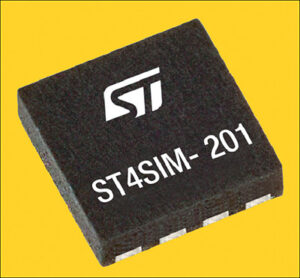
The ST4SIM-201 embedded SIM
According to the company, it is the first device to achieve GSMA eUICC security assurance, using the SGP.05 eUICC Protection Profile Version 1.1. Users can select a carrier that can be changed remotely without physical access. This simplifies logistics, enhances flexibility and reduces lifetime ownership costs, the company explains. Test and emergency profiles are available, as specified in SGP.02 version 4.2. The solution is offered in various form factors to meet customer requirements, including a 5-millimeter by 6-millimeter DFN8 dual flat no-lead package and a wafer-level chip-scale package, as well as standard 2FF, 3FF and 4FF plug-in cards.
Available in the industrial grade, the ST4SIM-201 is suitable for IoT applications and equipment requiring a cellular connection, according to STMicroelectronics. These include smart meters, asset trackers, health monitors, security devices, telemetry equipment, safety systems and more. Features include power-saving mode and extended discontinuous reception, which maximizes the use of idle modes. The ST4SIM-201 also supports ETSI-specified suspend and resume commands that facilitate power management.
In addition, STMicroelectronics is offering inertial sensors that contain an intelligent sensor processing unit: the ISM330ISN always-on six-axis inertial measurement unit for movement and position sensing. Intended for IoT and industrial applications, the IMU is designed to accelerate response time and extend battery life in condition monitors for predictive maintenance, as well as battery-operated asset trackers and industrial applications such as robots.
The ISM330ISN enables smart devices to perform motion-detection functions in a sensor without interaction with an external microcontroller, the company reports, saving power at the system level. A specialized processor, the ISPU, is integrated in a small area directly on the sensor chip, optimized for machine-learning applications, enabling the module to have a 50 percent smaller footprint and consume 50 percent less power than a typical co-packaged MCU, the company claims. Developers can program the ISPU using ST’s NanoEdge AI Studio.
Renesas Acquires Reality Analytics, Offers IoT Development Platforms
Renesas Electronics, a supplier of semiconductor solutions, has entered into a definitive agreement with Reality Analytics (Reality AI) a provider of embedded artificial intelligence solutions. Renesas will acquire Reality AI in an all-cash transaction, which has been unanimously approved by the boards of directors of both companies and is expected to close by the end of calendar year 2022, subject to shareholders’ and required regulatory approval and other customary closing conditions.
The acquisition is intended to boost Renesas’s endpoint AI capability, providing flexibility and efficiency for system developers to make their products Artificial Intelligence of Things-ready. According to Renesas, the importance of embedding AI into products has soared in the connected world as workload requirements at the endpoint have evolved. For Industrial IoT, consumer, automotive and other embedded applications that demand machine learning-based intelligent decision-making physically closer to the data source, low latency and high security are vital.
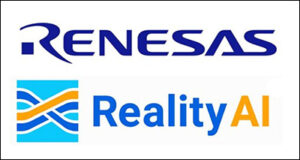
Renesas has acquired Reality Analytics.
In collaboration with partners, Renesas has been offering development environments and software that allow AI to be embedded in its low-power, secure microcontrollers and microprocessors. The Reality AI acquisition will enable the firm to expand its in-house capability to provide endpoint solutions from both a hardware and software perspective, across a range of IIoT, consumer and automotive applications.
Reality AI offers embedded AI and tiny machine learning (TinyML) solutions for non-visual sensing in automotive, industrial and commercial products. Its Reality AI Tools software environment, built to support the full product development lifecycle, provides analytics from non-visual sensor data, the company reports. Moreover, its inference-based AI solutions can be implemented across various endpoint AI applications, such as industrial anomaly detection and automotive sound recognition, using AI-built sensors.
Combining these technologies with Renesas’s MCU and MPU portfolios, the company explains, can help developers apply machine learning and signal processing to complex problems. In addition to embedded AI technologies, key IPs, software and tools, the acquisition will provide Renesas with an AIoT Center of Excellence in Maryland, extending its global software development talent base.
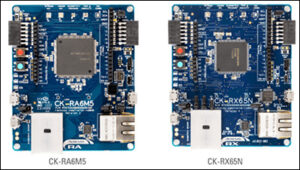
The CK-RA6M5 and the CK-RX65N
In addition, Renesas has announced two new cloud development kits, the CK-RA6M5 and the CK-RX65N, to provide connectivity for its RA and RX 32-bit microcontroller families. The kits are equipped with the company’s RYZ014A Cat-M1 module, a certified LTE cellular module that offers the ability to establish a wireless connection between MCUs and cloud services without a gateway. Users can develop IoT cloud products and solutions without having to design complex circuitry and software stacks.
The kits include the RYZ014A Cat-M1 Pmod module, multiple sensors and a high-performance MCU, and they can connect to global cloud service providers such as Amazon Web Services Cloud and IoT services. Both kits can run on AWS FreeRTOS for CK-RA6M5 using Flexible Software Package, and on CK-RX65N using RX Driver Package. Once connected to AWS IoT Core, the kits can access many cloud and IoT services from AWS for data analytics and IoT device management.
The kits support Renesas’s RA6M5 and RX65N MCU groups under a unified development platform. They have identical hardware and software features and a common dashboard user interface to access real-time cloud data. In addition to a Cat-M1 RYZ014A wireless module, the kits provide an option to use Ethernet to securely connect to the cloud when the Cat-M1 network is unavailable. Renesas plans to offer more wireless connectivity options in the future.
A2B Tracking RFID Platform Receives Zebra Validation
The A2B Tracking RFID Platform
A2B Tracking, a Zebra Technologies independent software vendor (ISV), has announced that it has completed Zebra’s Validated Program for its A2B Tracking RFID Platform, used in conjunction with the Zebra RFD40 handheld RFID reader and TC21 and TC26 touch computers. The Zebra designation signifies to customers and partners that the platform was successfully tested, confirming its performance and functionality with select Zebra devices.
Working with Zebra’s engineering teams, A2B Tracking tested its RFID platform for interoperability with the RFD40 sled, connected with either the TC21 or the TC26 touch computers. The A2B Tracker app operates on Zebra’s handheld touch computers, which connect directly via an eConnex USB connection or wirelessly via Bluetooth to the RFD40. The solution can manage such asset-tracking features as performing inventory counts, editing asset details, check-in and check-out, cycle counts and more.
The company’s proprietary Pro-Locate feature leverages RFID to search entire facilities to find a specific asset. The RFD40 handheld sled can scan 1,300 tag reads per second to decrease cycle-counting times and improve productivity. It weighs 19.1 ounces, is rated as durable with multiple 5-foot drops, and offers a read range of more than 20 feet, the company reports.
Technology Provider Velociti Doubles Warehouse Size
Technology solutions provider Velociti has announced, due to increasing technology adoption, a demand for its VeloCare health monitoring and repair service, and concerns over supply chain constraints, that it has moved its warehouse operations to a new 65,000-square-foot facility, doubling its current space. “The current uncertainty within the supply chain is causing companies to proactively purchase and store more inventory than they have in the past,” said Ryan Powell, Velociti’s senior VP of sales and marketing, in a prepared statement. “With this significant expansion, Velociti is well-positioned to meet our customers’ needs now and grow with them into the future.”
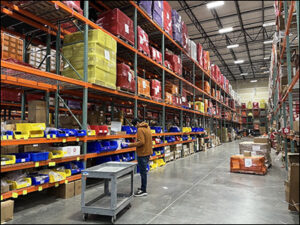
Velociti has doubled its warehouse size.
VeloCare features health monitoring, field repair services, a tech support call center and inventory-management services to maximize uptime of technology-based solutions. The solution currently manages more than 600,000 assets, the company reports, such as electronic logging devices, vehicle telematic systems, in-cab video safety solutions, restaurant point-of-sale systems, Wi-Fi and RFID systems. The new warehouse, located less than a mile from Velociti’s headquarters, will double door capacity to 12, with higher ceilings for increased racking capabilities and the space needed for optimal product flow.
The new location, Velocity notes, will allow shipments to be sent anywhere within the lower 48 states in one to three days. The facility features new wireless technologies and management systems to improve efficiency and visibility in the company’s day-to-day operations. “We are a 21st-century warehouse, priding ourselves in utilizing new and innovative technology solutions,” Powell said, adding that much design and planning went into increasing throughput and quality while minimizing the need to add additional resources.
The site has additional sustainability and safety features, the company reports, including LED lighting, electric vehicle charging stations, trailer lock-down capabilities at dock doors, and security systems. Velociti’s original warehouse location, attached to its Riverside headquarters, will house the firm’s expanded innovation lab and customer experience center.
Indoor Robotics Raises Series A Funding for Drone Tech
Indoor Robotics, an indoor drone technology company that recently launched its Tando drone, has announced the closing of $15 million in series A funding. The round of funding was led by Pitango and included Target Global, the European Innovation Council Fund and Spider Capital. The funding is intended to allow Indoor Robotics to expand its product development and enable intelligent indoor security worldwide.
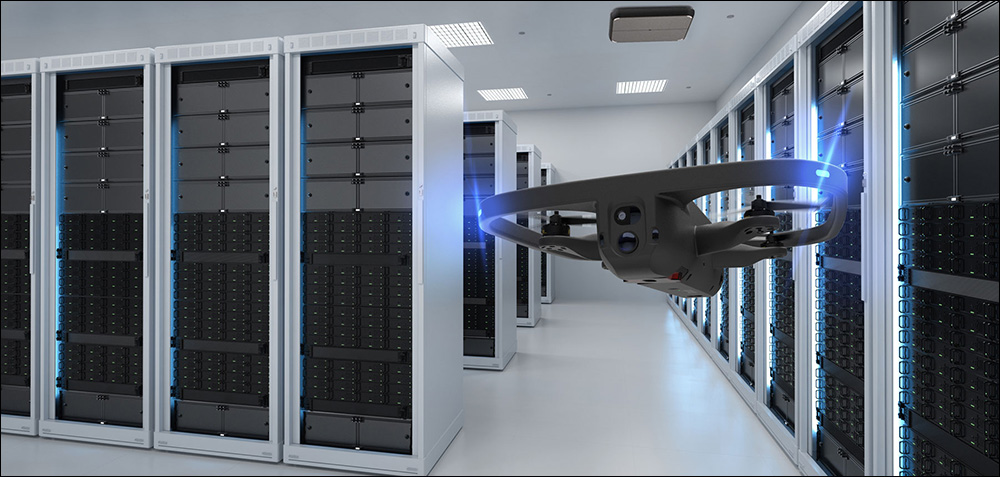
The Tando
Developing an autonomous indoor security robot has challenged robotics designers for years, according to Indoor Robotics. While some ground-based robots are commercially available, ordinary items like a chair or a step can prevent them from fully securing an area. The Tando employs multiple sensors and proprietary algorithms to accurately map and navigate in any indoor space, allowing it to autonomously navigate above or around any items in its path, while enabling it to secure and monitor large areas.
“We reimagined what a drone was capable of and combined human-like capabilities with AI tools to enable next-generation security and monitoring,” said Doron Ben David, Indoor Robotics’ cofounder and CEO, in a prepared statement. “Tando has already been deployed by the world’s leading enterprises and security monitoring companies and is making a tangible impact on safety and security.” Tando docks on the ceiling and functions as a security camera when not in flight. In addition to office buildings, it is being used to secure and monitor warehouses, data centers, malls and retail establishments.
The new funding will enable Indoor Robotics to move into full production and develop its go-to-market strategy, the company indicates. “We seized the opportunity to increase our investment in Indoor Robotics following the successful launch of Tando and the team’s demonstrated ability to surpass critical milestones,” added Rami Kalish, Pitango’s managing partner, in the prepared statement. “Indoor Robotics’ proven capabilities have generated exciting demand from the market, which the investors are excited to facilitate.”
In addition to security functions, the Tando is designed to provide safety and operational improvements, according to Indoor Robotics. It can collect thermal imaging data and environmental data, as well as record room temperatures and identify leaks. What’s more, the robot enables preventive maintenance, identifying areas in buildings that require care.

